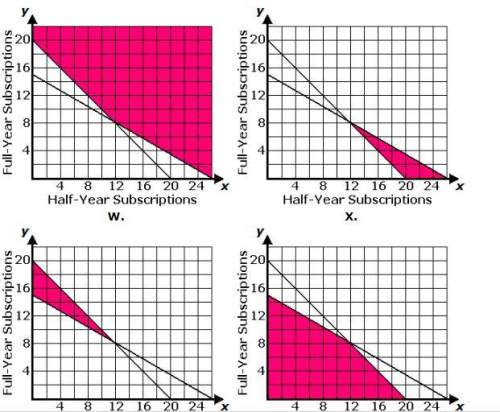
Mathematics, 11.06.2020 05:57 XVARYX
The points (1,-4) and (a,4) are on the graph of the function F(x)=x^2-kx-1. One possible value for “a” is

Answers: 3


Other questions on the subject: Mathematics


Mathematics, 21.06.2019 18:40, rivera8
Juliana says that she can use the patterns of equivalent ratios in the multiplication table below to write an infinite number of ratios that are equivalent to 6: 10. which statement explains whether juliana is correct? she is correct because she can multiply 6 and 10 by any number to form an equivalent ratio. she is correct because 6: 10 can be written as 1: 2 and there are an infinite number of ratios for 1: 2. she is not correct because the multiplication table does not include multiples of 10. she is not correct because 6: 10 is equivalent to 3: 5 and there are only 9 ratios in the multiplication table that are equivalent to 3: 5.
Answers: 1

You know the right answer?
The points (1,-4) and (a,4) are on the graph of the function F(x)=x^2-kx-1. One possible value for “...
Questions in other subjects:

Social Studies, 25.10.2021 09:40

Spanish, 25.10.2021 09:40

Mathematics, 25.10.2021 09:40

Mathematics, 25.10.2021 09:40

Mathematics, 25.10.2021 09:40


Mathematics, 25.10.2021 09:40

History, 25.10.2021 09:40

Physics, 25.10.2021 09:40





